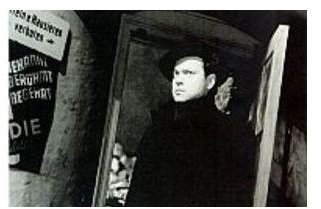What is a Dutch Angle? Tips on How to Use a Dutch Angle in Your Film Coverage
The Right Camera Angles
Film coverage is often composed of more conventional camera angles, ranging from master shots to mediums and close-ups to break down a scene. Though these often are great for continuity, they do not always provide the most energy or match the mood you are trying to convey. Oftentimes, an intense moment, one of uneasiness or suspense, is going to require something that is a little off balance and definitely different from the normal way that scenes are constructed for continuity editing. The Dutch angle is one that has been traditionally used to break up this form and include a camera angle that is both striking and unconventional.
Employing the Dutch Angle
The Dutch angle is a camera angle that is characterized by being canted, which is tilted off at an angle. This makes the plane of action that would normally run left to right now instead also run at an angle. Instead of allowing the camera to remain level, you will go right at the head of the tripod and make sure it remains off balance, this way the audience immediately feels out of balance.
The Dutch angle is then often used in combination with a high or low positioning, all of which is meant to take the camera off of the normal plane of action. Other than the tilted position that will put the horizon toward the bottom on one side of the frame and toward the top on the other side of the frame, the specifics of the camera positioning are not required. There are moving Dutch angles that are used, but often they stay very still or the movement is restricted to a dolly and not on the camera itself. The choice for this should really be around what will separate this Dutch angle from the rest of the camera choices used in the film coverage. If there is a lot of movement in the regular film coverage then you may want to keep the Dutch angle static.
Making Choices
The Dutch angle is intended to be very jarring to the audience, and so it should be used only on very specific occasions. More often than not, you will find that it is over used in contemporary cinema. This will become immediately noticeable to the audience, causing the film to feel excessively dramatic or even self-aware in a negative way. Instead, really save the Dutch angle for moments when it is really needed to show moments that are really out of sorts. Try to never put more than one or two Dutch angles in at a time in a specific sequence, and only a few times in a single film.
Along with the times you intend to use the Dutch angle, you also want to walk a fine line with the degree to which you tilt your camera position. If you do it too excessively it will take the audience out of the flow of the movie, so you want to be relatively slight. It may be a good chance to actually do camera tests to see how the Dutch angle appears on screen.
References
Source: Author’s own experience.
